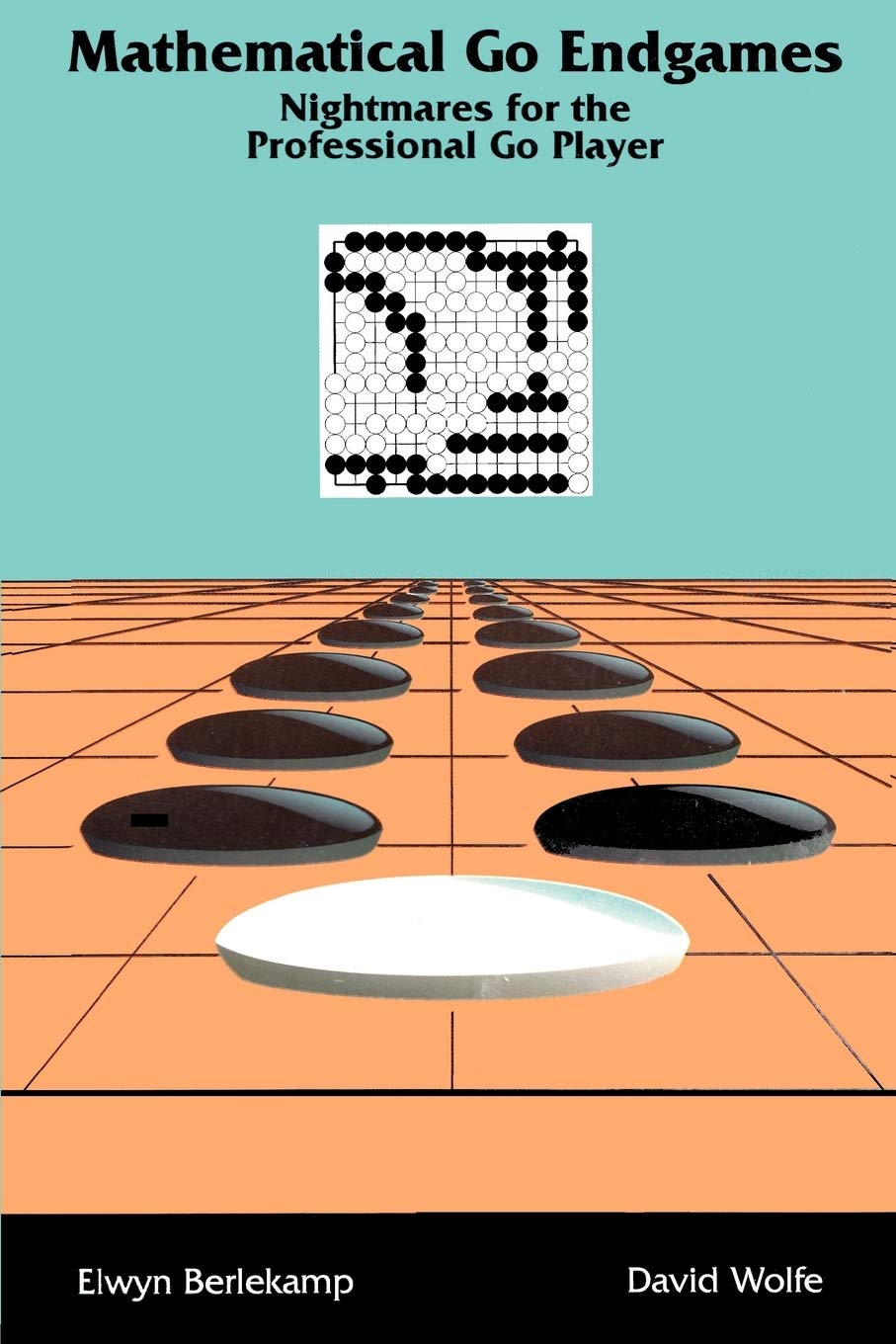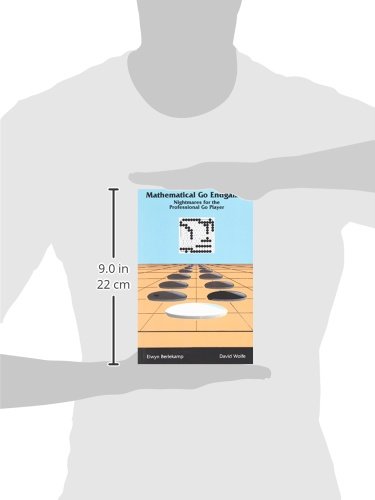



Mathematical Go Endgames: Nightmares for Professional Go Players
P**Z
Rare Math-Go Analysis, NOT for learning/playing go, GREAT for Game Theorists...
Don't buy this book thinking that it is about tutorials to help you with endgames, etc.-- the author humbly and honestly tells you there are better ways to improve! This is one of a few, rare books that apply game theory (GT) to go. Go has been around for 4,000 years, and is the most mathematically complex combinatorial game known. Yet, VERY FEW mathematicians have tried to tackle Go, due both to Western prejudice and lack of knowledge, and the amazing complexity of the game despite the simplest of rules.The most current GT book is the late Dr. Maschlers: Game Theory , and it doesn't even mention go. Go is in the chess family as a two player, non chance, complete information, zero sum (has to have a winner and loser) game. The two wonderful GT books that DO cover Go are Nowakowski: Games of No Chance (Mathematical Sciences Research Institute Publications) and Albert: Lessons in Play: An Introduction to Combinatorial Game Theory .From a computational complexity standpoint, go has no comparison. Chess models abound that can use parallel dual cores to approach GM level. I can beat the best computer go programs with only a 9 kyu rating. The known universe, by current estimates, will last another 1,000 trillion years. With millions of teraflops per second (all the computer processing on the planet), working each of the 31 million seconds in a year, it would take over 10^200 years-- far longer than the universe has "left," to brute force best moves in go! Even ending tablebases (as this text shows) cannot and likely will not be able to optimize decisions as they do in chess, at least with current non-quantum computers.Get this book if you're into GT, math, or if you love Go so much you really want to check out the underlying math, and possible innovative ideas on scaling, weighting and trees that might eventually make endgames more computable. If you have any thought of trying to create go programs, this is a MUST HAVE. Since China will probably own the West soon, it's probably a good idea for you to learn Go anyway. If not, well, it IS one of the most fun games you'll ever play, and as an advanced chess lover and player, I've got to say that Go is even more addictive! There are now android apps, the crazy stone program, and the wonderful gokgs dot com server where you can try out the weights in this book for your own research or fun and improvement.Although there has been new research in the years since this was published, the seminal ideas of temperature (chilling and warming weights) WERE known when this was published, so the earlier failures to find gote weights had been partially resolved (still not fully today) when this was written. The key point of this volume is how computers (and advanced players) have to integrate the truly "separate" games going on at different parts of the board. What the authors call initiative (Sente) might also be called a "leave" in pool-- not just what the move is worth, but how it "sets up" your next move.The author argues this can connect disparate areas with summation-- but admits that's only on a simplified set of assumptions that rarely occur in real endgames. Real games are non linear and even in some newer models dynamic, fractal and chaotic, resolving to (as yet computationally unpredictable) states of oscillation, attractors or chaos, as well as symmetry. In fact some of the newest (although still rare) work is looking at affine transformations vis a vis self similar positions and transformations/ translations/ rotations etc. If you want a GREAT career tip-- there are perhaps only 6 people in the entire West that are involved in all these intersections relative to go.To be ruthlessly honest, VERY LITTLE still is known about the math behind go, compared to nearly any other game! This is both prejudice and due to difficulty. This author should be congratulated for having the courage to get into it. I challenge all the bright Chinese and Japanese mathematicians to GET GOING-- both in research and translating more of what you're doing for those of us in the West that have discovered the amazing subtlety and complexity, and the underlying simplicity, of this astonishing and ancient game.By the way, this author is a co-founder and discoverer of combinatorial game mathematics under group theory, and is John Conway's partner and long time co-researcher in the whole Winning Ways series (eg, Winning Ways for Your Mathematical Plays: Volume 1 ), and has been a part (despite a few legal kinks) of the "all math falls under games" revolution started by Conway in his now famous ONAG book ( On Numbers and Games ). All hatchets happily buried, the author plugs ONAG in this book.Library Picks reviews only for the benefit of Amazon shoppers and has nothing to do with Amazon, the authors, manufacturers or publishers of the items we review. We always buy the items we review for the sake of objectivity, and although we search for gems, are not shy about trashing an item if it's a waste of time or money for Amazon shoppers. If the reviewer identifies herself, her job or her field, it is only as a point of reference to help you gauge the background and any biases.UPDATE: Comment says best go programs now play 5d plus. IT group at MIT says not close to that yet, you decide! Difference includes predictable attack patterns and lack of as many fronts as human players. They are getting better, for sure, but not near chess yet at this writing.
Trustpilot
1 month ago
2 days ago